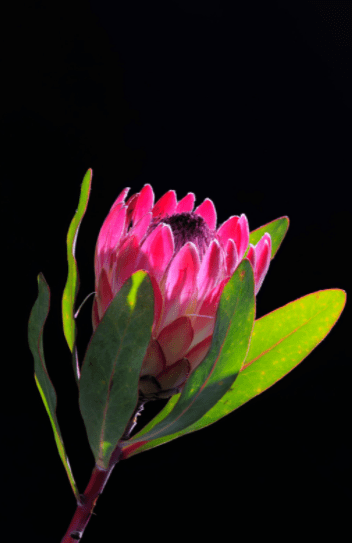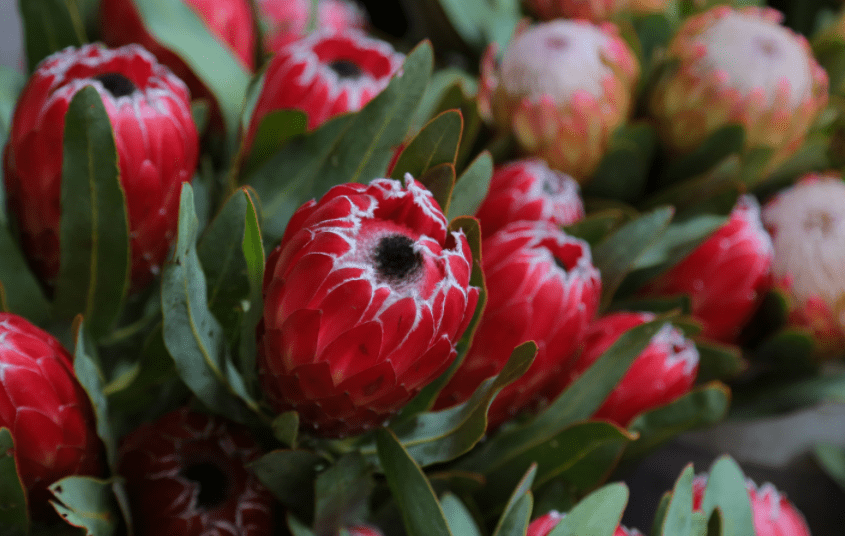Protease Cultivation
For growing protea flower in your garden, here are some dos and don’ts: It’s preferable to emulate a protea’s natural growing circumstances, such as providing slightly acidic, nutrient-poor, well-drained soil, especially on a slope, to stimulate drainage and root development.
Choose a location with an endless supply of sunlight. The protea family is unable to endure extreme temperature changes. Flowers and colorful foliage require full sun to grow.
Dig a hole twice the container’s size. Do not use bone meal or superphosphate in the soil, and do not add fertilizer or compost.
Before using it to fill in around it, add peat or pine bark to the soil (to make it more acidic).
Create acidic soil by pouring 50g of ammonium sulfate dissolved in 10 liters of water onto the ground every two weeks in summer and monthly in winter.
Proteas despise it when their roots are disturbed in any way. They grow horizontally beneath the soil surface, making them sensitive to the plant’s surroundings.
Because they dislike competition, keep other plants away from them and maintain the area free of weeds.
If weeds appear, pluck them out by hand while they are still little and lack robust root systems.
If you’re concerned that removing larger weeds will cause damage to the plant, cut them off at the ground level.
Tips on Growing Protea Flowers
Proteas are ideally planted between March and September.
Choose plants with healthy, disease-free leaves that are six to 18 months old (or 15 to 30cm tall) and have an excellent all-around growth form. Keep in mind that young plants are the easiest to transplant.
Proteas are not drought resistant right away after planting. For the first 18 to 20 months in the summer, water them every day or every other day.
Except in winter rainfall areas, when they should be watered weekly, there is no need to water them in the winter. Remember that they get their moisture from mountain mists in their native habitat. They don’t like damp feet, so don’t overwater them.
Instead of watering the plant from above, soak the soil around it. Place pine bark chips or other wood chips around the plant as a mulch.
Tips on Soil For Protea Flower Plants
Proteas and leucadendrons thrive in poor soils. They like highly nutrient-deficient soils that are low in phosphates and nitrates.

When cultivated in rich soils, they fail to send out long roots and are easily blown over or are short-lived.
Protea flowers can be very rewarding when given sandy, well-drained, neutral-to-acid soil and a sunny position. Except for a couple of species, low humidity is also an essential requirement unless drainage is perfect.
Excessive humidity and summer rain will make them prone to fungal diseases. To extend the life of proteas, it is crucial to cut them back after flowering. Remove the flower heads but do not cut back too hard into the old wood.























